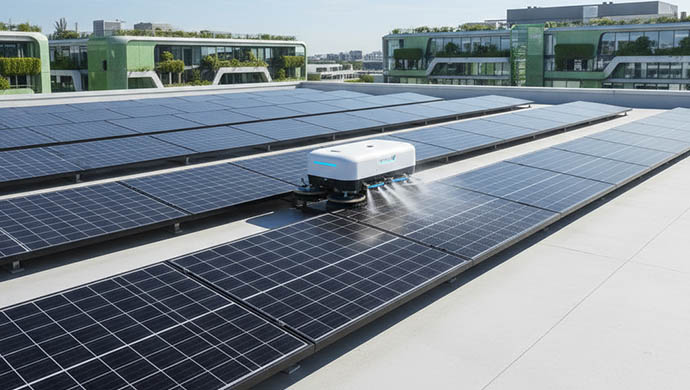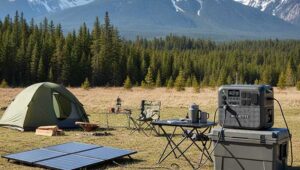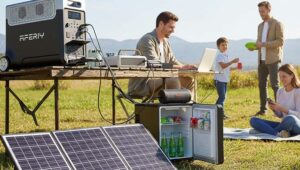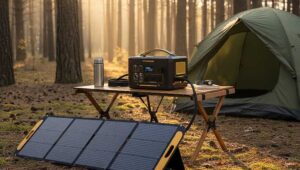Solar panels are one of the best ways to generate clean and renewable energy. But there’s a common challenge every solar owner faces: how to clean solar panels on roof automatically without wasting too much time, energy, or risking safety by climbing on the roof. Dust, bird droppings, leaves, and pollution can block sunlight and reduce your panel efficiency by up to 20–30%. That’s why regular cleaning is important—and an automatic cleaning system can be the smartest solution.
In this article, we’ll explain why cleaning is important, what types of automatic systems are available, how they work, their pros and cons, and some common FAQs.
Why do solar panels need cleaning?
Solar panels work best when sunlight hits the surface directly. Over time, dirt and debris build up, creating a thin layer that blocks sunlight. Here are the main reasons panels get dirty:
- Dust and sand – especially in dry, windy areas.
- Bird droppings – common problem in cities and rural rooftops.
- Leaves and pollen – seasonal issues.
- Air pollution and smog – reduces transparency of glass.
A dirty panel is like a dirty window; less light passes through, which means less energy production.
Manual vs. Automatic cleaning
- Manual cleaning: You climb on the roof or hire a service team. It’s effective but time-consuming and risky.
- Automatic cleaning: A system installed on your roof takes care of cleaning on its own, usually with water sprays, brushes, or robots. It’s safer, saves time, and ensures regular cleaning.
Types of automatic solar panel cleaning systems
There are several modern technologies available. Let’s look at the most common ones:
1. Water Sprinkler Systems
- Works like garden sprinklers but designed for solar panels.
- Sprays water at intervals (daily or weekly).
- Simple and low-cost solution.
- Can be automated with timers.
2. Robotic Cleaners
- Small robots run across your panels and wipe away dust.
- Some use brushes, while others use microfiber pads or air blowers.
- Can be programmed to work at night when panels are cool.
- Examples: Ecoppia, SolarCleano, or DIY robotic kits.
3. Brush Systems (Fixed or Moving)
- Long rotating brushes are installed on rails.
- The brush moves across the panels to clean them.
- Works well for large commercial rooftops.
4. Waterless Cleaning Systems
- Use soft microfiber rollers or electrostatic cleaning.
- Eco-friendly as they reduce water usage.
- Useful in areas where water is scarce.
5. Nanotechnology Coatings
- Special coatings that make the surface “self-cleaning.”
- Dust and water slide off easily (like non-stick surfaces).
- Not 100% replacement for cleaning but reduces frequency.
How Do Automatic Systems Work?
Most systems combine sensors, timers, and cleaning devices.
- Sensors detect dirt levels or rainfall.
- When panels get dirty, the system activates brushes, water spray, or robotic movement.
- Some systems can be controlled via mobile apps for remote monitoring.
- Energy-efficient models use solar power to recharge themselves.
Benefits of Automatic Cleaning
- Increased efficiency – Panels remain clean, giving maximum output.
- Time-saving – No need to climb roofs or hire workers regularly.
- Safety – Reduces accidents from manual rooftop cleaning.
- Cost-effective – Though initial cost is high, it saves money long term.
- Eco-friendly – Some systems recycle water or use no water at all.
Challenges and Considerations
- Cost: Initial installation can be expensive.
- Water usage: Sprinkler systems may waste water if not optimized.
- Maintenance: Robots and brushes require occasional servicing.
- Climate factors: In areas with heavy rain, you may not need frequent cleaning.
Tips for Choosing an Automatic Cleaning System
- Check panel size and roof type – Large flat roofs may need robotic systems, while smaller homes can use sprinklers.
- Consider water availability – Go for waterless options if water is limited.
- Look at warranty and maintenance – Reliable systems come with 2–5 years of support.
- Energy efficiency – Ensure the system doesn’t consume more energy than it saves.
- Budget – Compare upfront costs vs. long-term savings.
DIY Options for Homeowners
If professional systems feel costly, you can try small-scale DIY setups:
- Attach garden sprinklers along the roof edge with a timer.
- Use small robotic vacuums designed for panels.
- Apply hydrophobic coating sprays to reduce dirt sticking.
Future of Solar Panel Cleaning
With solar power growing worldwide, automatic cleaning will become more advanced. Expect to see:
- AI-powered robots that detect dirt spots precisely.
- Self-cleaning glass with smart coatings.
- Fully integrated systems that work with solar monitoring apps.
Frequently Asked Questions (FAQ)
Q1: How often should solar panels be cleaned?
Most experts recommend every 2–3 months, but it depends on your location and environment.Q2: Do automatic cleaning systems use a lot of water?
Not always. Some recycle water, and others are waterless. Choose based on your local conditions.Q3: Can rain clean solar panels automatically?
Light rain helps but is not enough to remove sticky dirt or bird droppings.Q4: How much does an automatic cleaning system cost?
Prices range from $500–$5000 depending on the system size and type.Q5: Is it safe to install robots on my rooftop panels?
Yes, most are lightweight and designed not to damage panels. Always buy from trusted brands.
Conclusion
Cleaning solar panels is essential for maximum performance. Instead of manual cleaning, investing in automatic solar panel cleaning systems can save time, improve efficiency, and keep your rooftop safe. From sprinklers to advanced robots, there are many options available for both homeowners and businesses.
So next time you ask yourself how to clean solar panels on roof automatically, remember—you don’t need to risk climbing the roof anymore. Let technology handle the job while you enjoy the full benefits of clean, renewable solar power.




